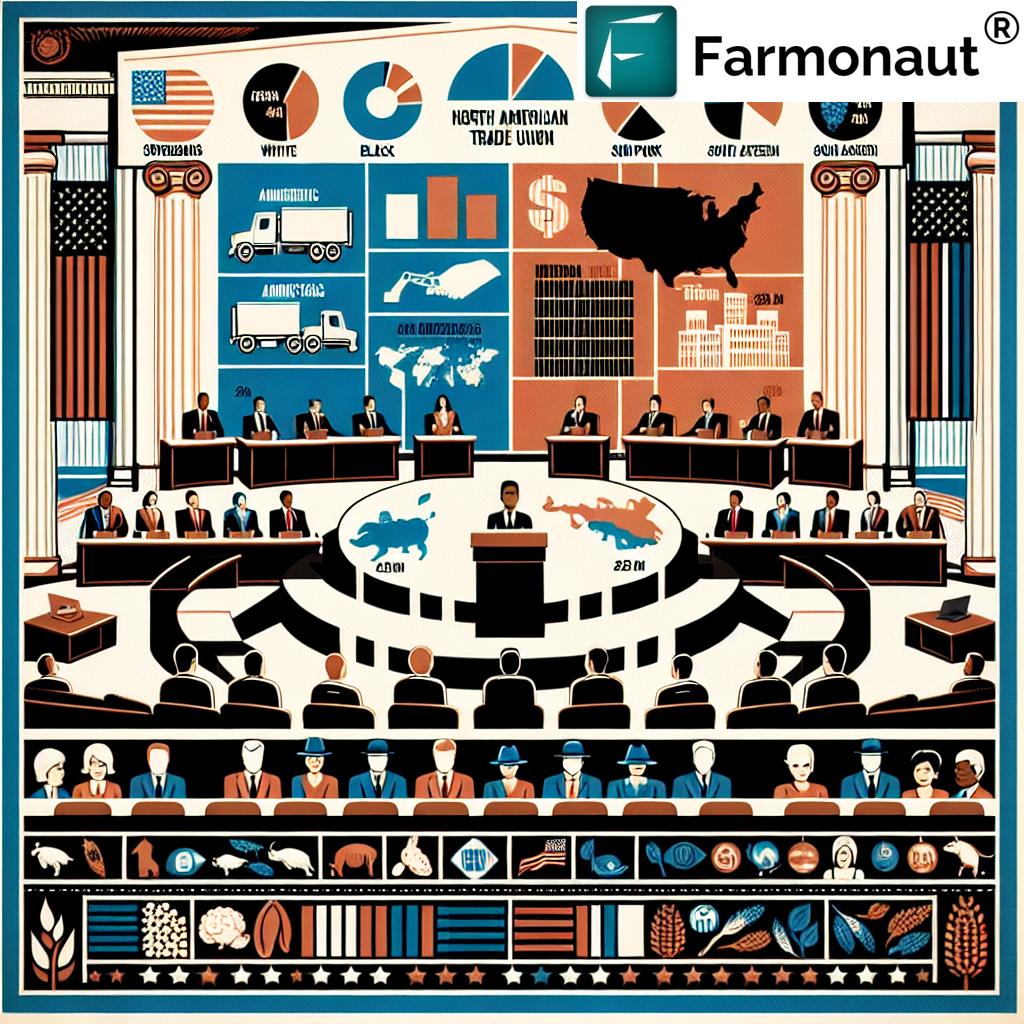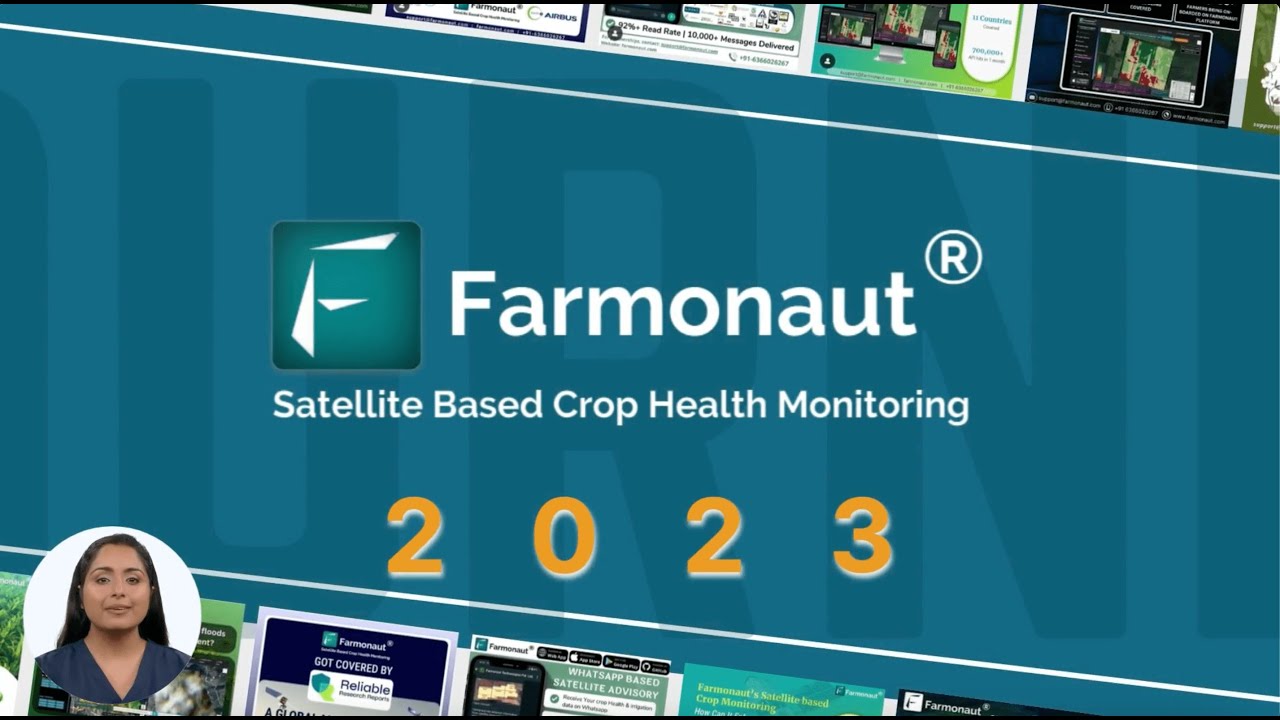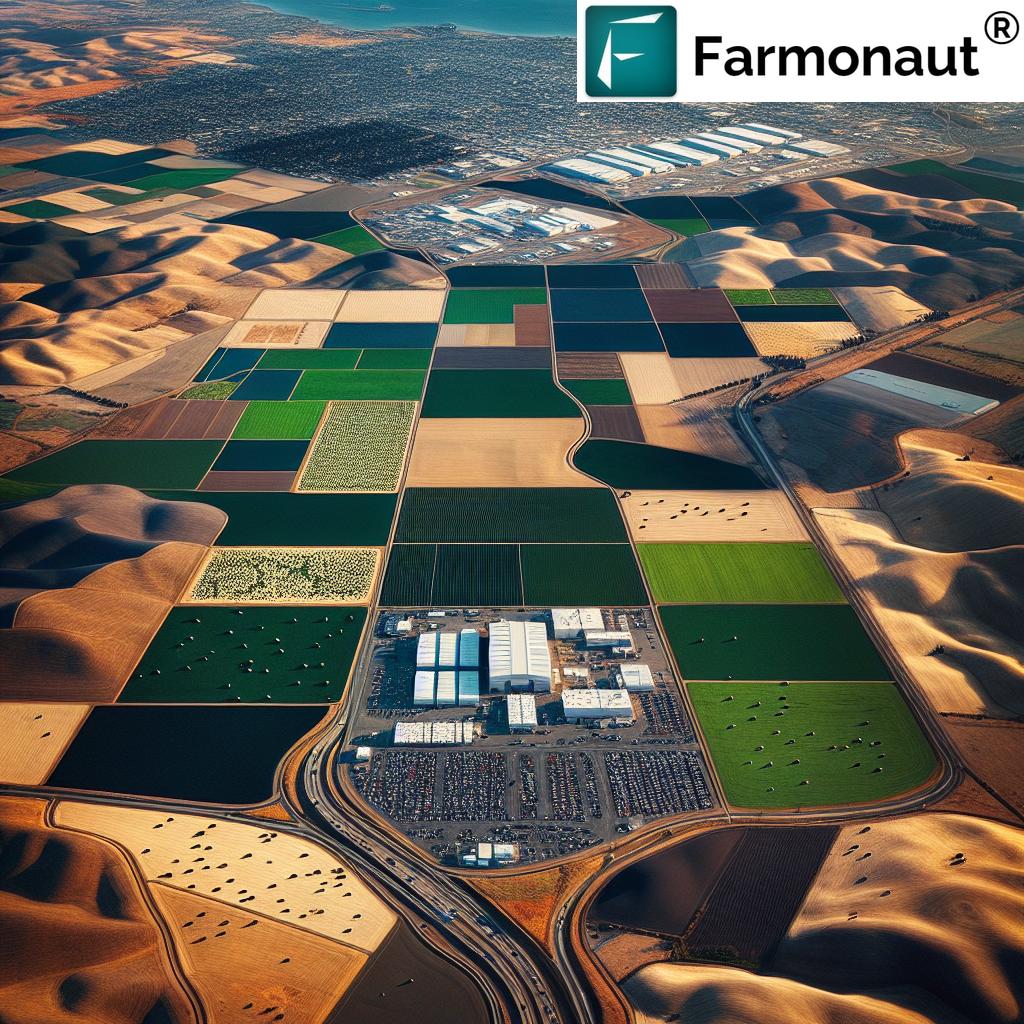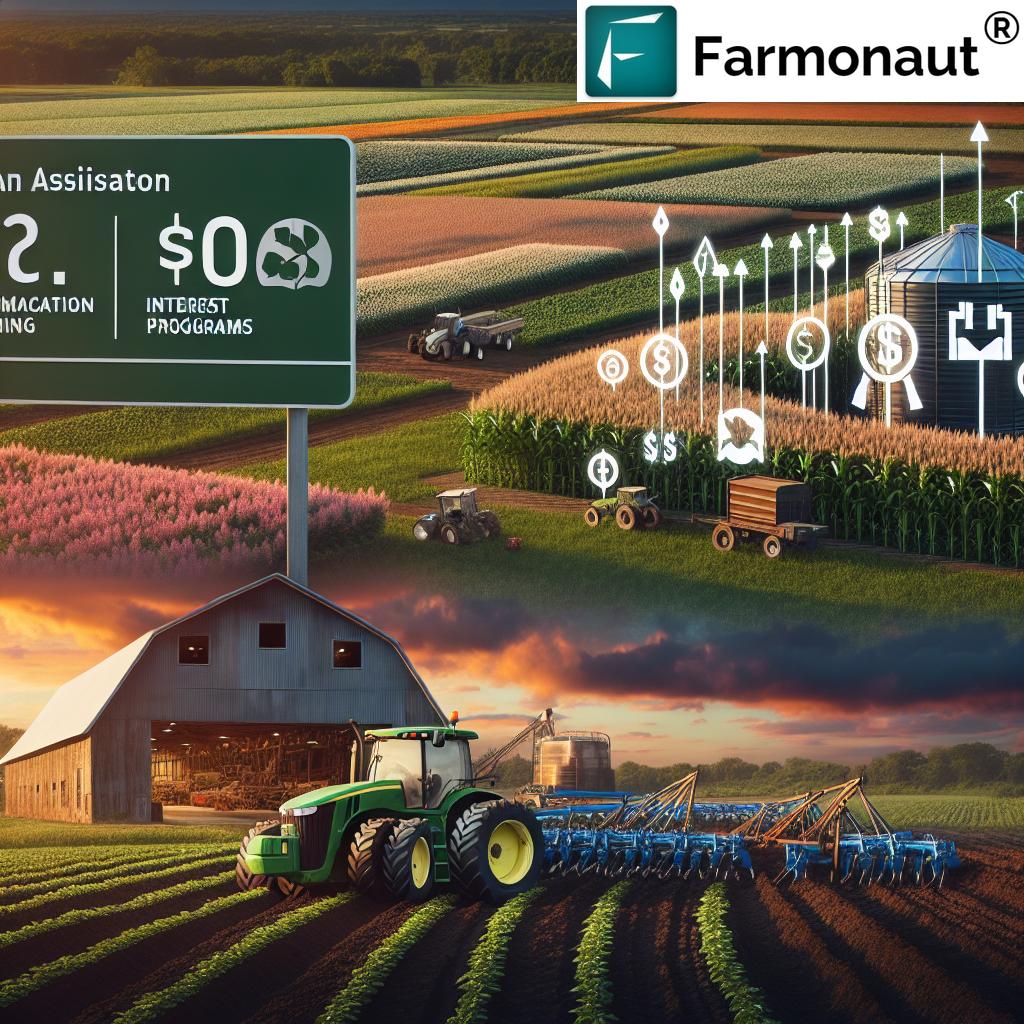US-China Trade Tensions: Impact on Agricultural Markets and Future of American Farmers
“The US-China Phase One trade agreement missed its targets, impacting agricultural exports and market stability.”
In recent years, the agricultural landscape of the United States has been significantly shaped by international trade dynamics, particularly the complex relationship between the US and China. As we delve into this crucial topic, we’ll explore how trade tensions have reverberated through American farmlands, affecting markets, policies, and the livelihoods of farmers across the nation.

The Landscape of US-China Agricultural Trade
The United States and China, two agricultural powerhouses, have long been intertwined in a complex web of trade relations. China, with its burgeoning population and growing middle class, has historically been a significant market for American agricultural products. However, recent years have seen a dramatic shift in this relationship, primarily due to escalating trade tensions and policy changes.
In 2018, the US administration implemented a series of tariffs on Chinese goods, citing unfair trade practices. China retaliated with its own set of tariffs, many of which targeted US agricultural products. This tit-for-tat exchange marked the beginning of what many have termed a “trade war,” with far-reaching consequences for American farmers and the broader agricultural sector.
The Phase One Agreement: Promises and Realities
In an attempt to de-escalate tensions and stabilize trade relations, the US and China signed the Phase One trade agreement in January 2020. This agreement set ambitious targets for Chinese purchases of US goods, including a significant increase in agricultural imports. However, the reality has fallen short of these expectations.
Under the agreement, China committed to purchasing an additional $200 billion worth of US goods over two years, including substantial agricultural products. Yet, as we’ve observed, these targets were significantly missed. Reports indicate that China only realized about 58% of the agreed purchases, leaving a considerable gap between expectations and reality.
This shortfall has had profound implications for US agricultural markets. Farmers who had anticipated increased demand and higher prices found themselves facing continued uncertainty and market volatility. The missed targets of the Phase One agreement underscore the challenges of enforcing international trade deals and the need for more robust mechanisms to ensure compliance.
The Impact on American Farmers
The consequences of these trade tensions have been acutely felt by American farmers. Let’s break down some of the key impacts:
- Market Volatility: Uncertainty in trade policies has led to significant price fluctuations for key commodities like soybeans, corn, and pork.
- Reduced Exports: Retaliatory tariffs have made US agricultural products less competitive in the Chinese market, leading to reduced exports.
- Income Pressure: With decreased demand and lower prices, many farmers have experienced financial strain, necessitating government support programs.
- Shift in Crop Choices: Some farmers have altered their planting decisions, moving away from crops heavily dependent on Chinese demand.
- Long-term Market Loss: There’s concern that prolonged trade tensions could result in permanent loss of market share as China diversifies its import sources.
To illustrate the magnitude of these impacts, let’s look at a comparative table of trade impacts across various agricultural sectors:
| Agricultural Sector | Pre-Trade Tension Exports (Est. $B) | Current Exports (Est. $B) | Percentage Change (%) |
|---|---|---|---|
| Soybeans | 14.0 | 8.5 | -39.3% |
| Corn | 1.5 | 1.2 | -20.0% |
| Pork | 1.1 | 2.3 | +109.1% |
| Beef | 0.3 | 0.8 | +166.7% |
This table clearly illustrates the varied impact across different agricultural sectors. While some sectors like soybeans have seen significant declines, others like pork and beef have experienced growth, partly due to factors such as the African Swine Fever outbreak in China increasing demand for pork imports.
The Role of Technology in Mitigating Trade Challenges
In the face of these trade-related challenges, technology has emerged as a crucial tool for farmers to optimize their operations and remain competitive. Precision agriculture technologies, such as those offered by Farmonaut, are helping farmers make data-driven decisions to improve yields and reduce costs.
Farmonaut’s satellite-based crop health monitoring system, for instance, provides real-time insights into vegetation health, soil moisture levels, and other critical metrics. This information allows farmers to optimize resource usage, potentially offsetting some of the financial pressures caused by market volatility.
Moreover, Farmonaut’s AI-driven advisory system, Jeevn AI, offers personalized farm management strategies, helping farmers adapt to changing market conditions more effectively. By leveraging these technologies, farmers can enhance their resilience in the face of trade-related uncertainties.
The US-Mexico-Canada Agreement: A New Trade Landscape
While much attention has been focused on US-China relations, it’s crucial to consider other significant trade developments, particularly the US-Mexico-Canada Agreement (USMCA). This agreement, which replaced the North American Free Trade Agreement (NAFTA), has important implications for US agriculture.
The USMCA aims to modernize North American trade relations and includes several provisions beneficial to US farmers:
- Increased market access for US dairy products in Canada
- Elimination of Canada’s Class 6 and 7 milk pricing programs
- Improved access for US poultry and eggs in Canadian markets
- Strengthened rules of origin for agricultural products
However, the implementation of the USMCA has not been without challenges. Recent discussions in the Senate have highlighted concerns about potential violations arising from tariff actions. These concerns underscore the complexity of balancing national security interests with trade agreement commitments.
“Retaliatory tariffs from China have affected over $20 billion worth of US agricultural exports since 2018.”
Strategies for Opening New Markets
In light of the challenges in the Chinese market, there’s a growing emphasis on diversifying and expanding agricultural exports to other countries. This strategy aims to reduce dependency on any single market and create new opportunities for American farmers.
Some key strategies and focus areas include:
- Targeting High-Tariff Markets: Countries like India and Turkey, which currently maintain high tariff barriers against US agricultural products, represent potential growth opportunities if trade negotiations can reduce these barriers.
- Expanding in Existing Markets: Strengthening trade relationships with countries like Japan, where there’s already a significant US agricultural presence, can lead to increased exports.
- Exploring Emerging Markets: Developing countries with growing middle-class populations offer potential for long-term export growth.
- Leveraging Technology: Utilizing platforms like Farmonaut’s API can help in market analysis and identifying new export opportunities.

The Role of Government Support and Policy
As farmers navigate these challenging trade dynamics, government support has played a crucial role in mitigating some of the negative impacts. Key aspects of this support include:
- Market Facilitation Program: Providing direct payments to farmers affected by retaliatory tariffs.
- Crop Insurance Programs: Offering protection against market volatility and production risks.
- Trade Promotion Programs: Supporting efforts to develop new markets for US agricultural products.
- Research and Development Funding: Investing in agricultural innovation to enhance productivity and competitiveness.
However, the sustainability and long-term effectiveness of these support measures remain topics of debate. There’s a growing recognition that while short-term assistance is necessary, long-term solutions must focus on creating a more resilient and diversified agricultural sector.
The Intersection of Trade and Security
An increasingly important aspect of the trade discussion is the intersection between trade policy and national security. Recent Senate hearings have highlighted how tariffs are being used not just as economic tools, but also as leverage to address broader security concerns.
Key issues at this intersection include:
- Illegal Immigration: Using trade measures to encourage cooperation on border security.
- Fentanyl Trafficking: Leveraging trade relationships to combat the opioid crisis.
- Technology Transfer: Protecting sensitive technologies and intellectual property through trade policies.
- Supply Chain Security: Ensuring resilient and secure supply chains for critical agricultural inputs.
This multifaceted approach to trade policy adds layers of complexity to international negotiations and can have significant implications for agricultural markets. Farmers and agribusinesses must now navigate not just economic considerations, but also geopolitical and security dynamics in their strategic planning.
The Future of US Agriculture in International Trade
As we look to the future, several key trends and factors are likely to shape the landscape of US agriculture in international trade:
- Digital Transformation: The increasing adoption of digital technologies, such as those offered by Farmonaut, will play a crucial role in enhancing agricultural productivity and competitiveness. Farmers can leverage tools like the Farmonaut Android app or the iOS app to stay ahead in this digital revolution.
- Climate Change Adaptation: As climate patterns shift, farmers will need to adapt their practices and crop choices, potentially altering the mix of agricultural exports.
- Evolving Consumer Preferences: Growing demand for organic, sustainable, and plant-based products may create new export opportunities.
- Technological Innovation: Advancements in areas like gene editing and precision agriculture could significantly boost productivity and create new high-value export products.
- Trade Agreement Modernization: Future trade agreements are likely to include provisions on digital trade, environmental standards, and labor practices, reshaping the landscape of agricultural trade.
The Role of Small Businesses in Agricultural Trade
While much of the discussion around agricultural trade focuses on large-scale farming operations, it’s crucial to recognize the significant role played by small businesses in this sector. These entities, ranging from family farms to small-scale processors and exporters, form the backbone of many rural economies and contribute significantly to the diversity and resilience of the US agricultural sector.
However, small businesses often face unique challenges in navigating international trade dynamics:
- Limited Resources: Smaller operations may lack the financial and human resources to adapt quickly to changing trade policies or market conditions.
- Market Access: Entering new international markets can be particularly challenging for small businesses due to regulatory complexities and high initial costs.
- Risk Management: Smaller entities may have less capacity to absorb market shocks or weather prolonged periods of uncertainty.
- Technology Adoption: While digital tools can level the playing field, small businesses may face barriers in adopting and fully leveraging new technologies.
To address these challenges, several initiatives and strategies have emerged:
- Export Assistance Programs: Government and industry-led programs providing guidance and resources for small businesses looking to enter international markets.
- Cooperative Models: Small producers forming cooperatives to pool resources and enhance their market presence.
- Digital Platforms: Leveraging e-commerce and digital marketing to reach international customers directly.
- Niche Market Focus: Specializing in high-value, niche products that can command premium prices in international markets.
Tools like Farmonaut’s satellite-based monitoring can be particularly valuable for small businesses, offering affordable access to precision agriculture technologies that can enhance productivity and competitiveness. The Farmonaut API Developer Docs provide resources for integrating these tools into existing farm management systems.
Addressing Illegal Immigration Through Trade Measures
One of the more controversial aspects of recent trade discussions has been the use of trade policy as a tool to address illegal immigration. This approach, which links trade concessions to cooperation on border security and immigration control, represents a significant shift in how trade agreements are conceptualized and negotiated.
Key considerations in this approach include:
- Economic Incentives: Using preferential trade terms as an incentive for countries to enhance border security and reduce illegal migration flows.
- Labor Market Dynamics: Addressing root causes of migration through economic development initiatives tied to trade agreements.
- Regional Cooperation: Fostering collaborative approaches to migration management among trading partners.
- Legal and Ethical Implications: Navigating the complex legal and ethical considerations of linking trade to immigration policy.
While proponents argue that this approach can lead to more comprehensive solutions to complex international challenges, critics raise concerns about the potential for trade disruptions and the effectiveness of using trade as a lever for immigration policy.
The Future of US-China Agricultural Trade
As we look ahead, the future of US-China agricultural trade remains uncertain but critically important. Several factors will likely shape this relationship:
- Political Climate: The overall diplomatic relationship between the US and China will continue to influence agricultural trade.
- Enforcement Mechanisms: Development of more robust systems to ensure compliance with trade agreements.
- Market Diversification: Both US exporters and Chinese importers may seek to diversify their trade partners to reduce dependency.
- Technological Competition: The race for agricultural innovation could become a new frontier in US-China competition.
- Environmental Considerations: Growing emphasis on sustainable agriculture may introduce new dynamics in trade negotiations.
For American farmers, navigating this evolving landscape will require adaptability, strategic planning, and leveraging of technological tools to enhance competitiveness. Platforms like Farmonaut can play a crucial role in this adaptation, providing farmers with data-driven insights to optimize their operations and remain resilient in the face of market uncertainties.
Conclusion: Navigating the Complex Landscape of Agricultural Trade
The impact of US-China trade tensions on agricultural markets and the future of American farmers is a complex and evolving story. From the challenges of enforcing international agreements to the opportunities presented by new markets and technologies, the agricultural sector is at a critical juncture.
As we’ve explored, the consequences of these trade dynamics extend far beyond simple import-export figures. They touch on issues of rural economic health, national security, technological innovation, and even immigration policy. For American farmers, navigating this landscape requires not just agricultural expertise, but also an understanding of global economic trends, policy developments, and technological advancements.
Looking ahead, several key themes emerge:
- The need for diversification in export markets to reduce vulnerability to trade tensions with any single country.
- The critical role of technology in enhancing agricultural productivity and competitiveness.
- The importance of flexible and adaptive trade policies that can respond to rapidly changing global dynamics.
- The growing intersection between trade policy and broader national security concerns.
- The potential for innovative approaches to address long-standing challenges in agricultural trade.
For farmers and agricultural businesses looking to thrive in this complex environment, staying informed and leveraging available tools and resources will be crucial. Platforms like Farmonaut offer valuable solutions for optimizing farm operations and staying competitive in a challenging global market.
Earn With Farmonaut: Affiliate Program
Earn 20% recurring commission with Farmonaut’s affiliate program by sharing your promo code and helping farmers save 10%. Onboard 10 Elite farmers monthly to earn a minimum of $148,000 annually—start now and grow your income!
FAQ Section
Q: How have US-China trade tensions affected American farmers?
A: Trade tensions have led to market volatility, reduced exports to China for some commodities, and put pressure on farm incomes. However, impacts vary across different agricultural sectors.
Q: What is the Phase One trade agreement, and has it been successful?
A: The Phase One agreement, signed in 2020, set targets for Chinese purchases of US goods, including agricultural products. However, these targets have been significantly missed, with China realizing only about 58% of agreed purchases.
Q: How are farmers adapting to the changing trade landscape?
A: Farmers are diversifying crops, exploring new markets, adopting precision agriculture technologies like those offered by Farmonaut, and leveraging government support programs to navigate trade uncertainties.
Q: What role does technology play in helping farmers address trade-related challenges?
A: Technologies like Farmonaut’s satellite-based crop monitoring and AI advisory systems help farmers optimize operations, reduce costs, and make data-driven decisions, enhancing their resilience to market fluctuations.
Q: How does the US-Mexico-Canada Agreement (USMCA) impact US agriculture?
A: The USMCA aims to modernize North American trade relations, offering increased market access for US dairy, poultry, and eggs in Canada, and strengthening rules of origin for agricultural products.
Q: What strategies are being employed to open new markets for US agricultural exports?
A: Strategies include targeting high-tariff markets like India and Turkey, expanding in existing markets like Japan, exploring emerging markets, and leveraging technology for market analysis.
Q: How is the US government supporting farmers affected by trade tensions?
A: Support includes direct payments through the Market Facilitation Program, crop insurance programs, trade promotion initiatives, and funding for agricultural research and development.
Q: What are the long-term implications of current trade policies on US agriculture?
A: Long-term implications may include shifts in crop choices, changes in global market share, increased focus on technological innovation, and a greater emphasis on diversifying export markets.
As we continue to navigate these complex trade dynamics, tools and technologies that enhance agricultural efficiency and market insights will be invaluable. Farmonaut’s suite of solutions offers farmers powerful resources to optimize their operations and stay competitive in an ever-changing global market.




















